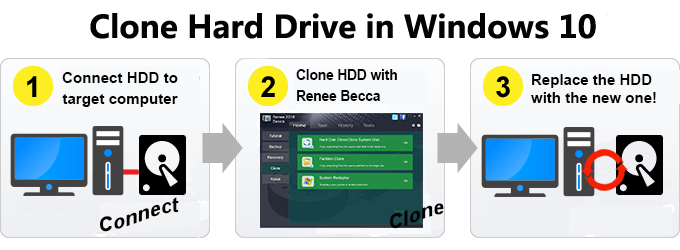

💜 Clone a hard drive for backup and disaster recovery, like system crashes, ransomware, virus, or accidental deletion: The cloned drive is an exact copy of old disk, that is, a copy, thus you can use it to recover files or system if something bad happens. I believe it's the priority choice for users who have enough budget. 💜 Clone Windows 7 to SSD for better performance: In general, there are two disk types, HDD and SSD, and usually, the SSD disk is used for OS and HDD for data storage. The best way is to clone smaller disk to larger disk. Even if you do so, you may receive this warning again and again quickly unless you replace old drive with a larger one.
#CLONE C DRIVE WINDOWS 7 FASTCOPY FREE#
At the same time, your computer beomes slower, it says "you are running out of space on this PC" and ask you to free up space.
#CLONE C DRIVE WINDOWS 7 FASTCOPY INSTALL#
💜 Insufficient disk space and lower computer performance: As time goes by, you may install more programs and store many files on this disk. There are some circumstances that you might clone hard drive to SSD or HDD in Windows 7/8/10/11:

It will include everything on the original disk, including the operating system, system settings, drivers, installed programs, and personal data, thus you don't need to worry about data loss and reinstallation of programs. The best way is to clone Windows 7 to new hard drive with free disk cloning software. I understand this will require much deactivating and uninstalling, not only windows but also other programs such as MSOffice, Lightroom, etc. I suspect my Windows 7 hard drive is likely to fail soon, thus I'm eager to know a way to transfer my OS to a new hard drive, as I am not keen on having to re-purchase another copy of windows for a new hard drive just because of hard drive problems. You can have both TeraCopy and FastCopy installed and use either/or - both have to be integrated into windows via their options, once you have done so to use TeraCopy simply use Copy/Paste or CTRL+C/CTRL+V - to use FastCopy use Copy/CTRL+C and to paste Right-Click and choose PASTE (FASTCOPY) then press enter which clicks the 'execute' button that appears, or click on it with mouse.How to transfer Windows 7 to a new hard drive this alone can add 3-5 seconds onto the copying time, whereas TeraCopy you can simply use CTRL+C and CTRL+V with no interaction from you at all, it replaces windows copier.įastCopy has some advanced buffer settings that allows you to adjust buffer sizes which may improve (or worsen) copy times, I think if you copy a LOT of files a LOT of the time then FastCopy is for you - but if most of your copying (like me) is out to an external drive then TeraCopy would be better. when 'pasting' you have to right-click and choose Paste (fastcopy) from the menu and then when its copy window appears you have to click the "execute" button. drive.įastCopy may be the quickest but TeraCopy integrates into windows better and has a nicer interface with progress bars, it also has the option to Pause during copying, FastCopy can be integrated into windows too but. drive, windows is a bit slower, especially when copying out to ext. TeraCopy = 19 seconds in - 22 seconds outĪs you can see FastCopy is the quickest, but not by much as Teracopy is very close behind and almost as quick when copying out to ext. Windows = 100 seconds in - 142 seconds outįastCopy = 16 seconds in - 20 seconds out

TeraCopy = 98 seconds in - 102 seconds out TeraCopy = 83 seconds in - 86 seconds outįastCopy = 86 seconds in - 98 seconds out TeraCopy = 36 seconds in - 36 seconds outįastCopy = 76 seconds in - 85 seconds out Here are my findings ("in" refers to external-to-internal drive and "out" refers to the opposite)įastCopy = 32 seconds in - 36 seconds out these tests were done with no Anti-Virus running or other background processes. After doing some research to find out if TeraCopy was faster than Windows 7 I found out there are other file copiers that are fast, I decided to pit the two considered the best/fastest together with windows.


 0 kommentar(er)
0 kommentar(er)
